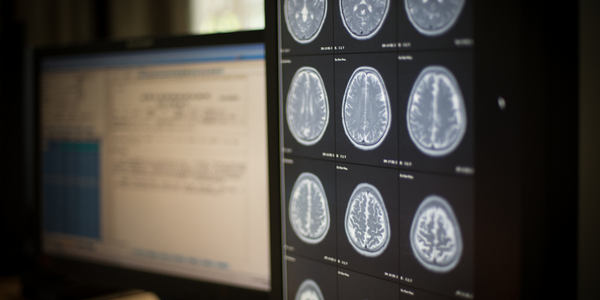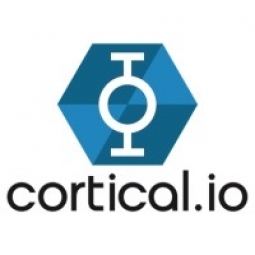Customer Company Size
Large Corporate
Region
- America
Country
- United States
Product
- SemanticPro Extract & Analyze
Tech Stack
- Machine Learning
- Natural Language Processing
Implementation Scale
- Enterprise-wide Deployment
Impact Metrics
- Productivity Improvements
- Revenue Growth
Technology Category
- Analytics & Modeling - Natural Language Processing (NLP)
- Analytics & Modeling - Machine Learning
Applicable Functions
- Sales & Marketing
Use Cases
- Automated Disease Diagnosis
Services
- Data Science Services
About The Customer
The customer is a large US-based media conglomerate that owns more than 40 publications. They work with different agencies to sell advertising spaces and receive approximately 100 requests per week, corresponding to about 5,000 messages per year and double as many attachments. These Requests for Proposals (RFPs) need to be classified depending on criteria like vertical market or target audience before being directed to the appropriate department. The company was looking for a solution to automate this process while maintaining an acceptable level of accuracy.
The Challenge
The media company, owning more than 40 publications, was receiving approximately 100 requests per week, corresponding to about 5,000 messages per year and double as many attachments. These Requests for Proposals (RFPs) needed to be classified depending on criteria like vertical market or target audience before being directed to the appropriate department. The challenge was that the RFPs were highly unstructured documents, coming in various formats like email body text or attachments in Word or Powerpoint. The extraction targets were very diverse and, in most cases, with very little context to learn from, making it difficult for state-of-art machine learning systems to deliver satisfactory results.
The Solution
The company implemented SemanticPro Extract & Analyze, a solution developed by Cortical.io that automatically extracts, reviews, and analyzes key data from requests with a high level of precision. This solution is able to handle short texts without punctuation even with little to no context, as well as different document types like Word, Excel, or Powerpoint. The solution has been successfully trained to recognize very diverse extraction targets like “Campaign name”, “Client” and “Agency”, as well as very specific vocabulary, like “type of ad products“. Extraction results are seamlessly exported in different formats or databases, as preferred by the user. After the production phase is completed, the company envisions to implement a classification and routing solution to route the inbound emails to the appropriate departments.
Operational Impact
Quantitative Benefit

Case Study missing?
Start adding your own!
Register with your work email and create a new case study profile for your business.
Related Case Studies.

Case Study
Artificial Intelligence and the implications on Medical Imaging
There are several factors simultaneously driving integration of AI in radiology. Firstly, in many countries around the world there is a discrepancy between the number of doctors trained in radiology and the rising demand for diagnostic imaging. This leads to greater demands for work efficiency and productivity. For example, the number of radiology specialists (consultant work- force) in England went up 5% between 2012 and 2015, while in the same period the number of CT and MR scans increased by 29 and 26 percentage points respectively. In Scotland, the gap widened even further (The Royal College of Radiologists 2016). Today, the average radiologist is interpreting an image every three to four seconds, eight hours a day (Choi et al. 2016).Secondly, the image resolution of today’s scanners is continuously improving – resulting in an ever greater volume of data. Indeed, the estimated overall medical data volume doubles every three years, making it harder and harder for radiologists to make good use of the available information without extra help from computerized digital processing. It is desirable, both in radiological research and in clinical diagnostics, to be able to quantitatively analyze this largely unexploited wealth of data and, for example, utilize new measurable imaging biomarkers to assess disease progression and prognosis (O’Connor et al. 2017). Experts see considerable future potential in the transformation of radiology from a discipline of qualitative interpretation to one of quantita- tive analysis, which derives clinically relevant information from extensive data sets (“radiomics”). “Images are more than pictures, they are data,” American radiologist Robert Gillies and his colleagues write (Gillies et al. 2016). Of course, this direction for radiology will require powerful, automated procedures, some of which at least will come under the field of artificial intelligence.

Case Study
Improving Diagnosis Accuracy and Saving Lives
Dr. Partho Sengupta needed a way to accurately identify disease patterns resulting from echocardiograms in order to improve diagnostics and save more lives. Specifically, he wanted to distinguish between two disparate diseases: cardiomyopathy, which directly impacts the heart muscle and often leads to heart failure, and pericarditis, which acts as if the heart is involved but doesn’t actually affect the heart. While both diseases present with similar heart conditions, the treatments are vastly different. For pericarditis, the treatment may include medication and, rarely, surgery. However, if the diagnosis is cardiomyopathy the patient undergoes medical management (i.e. a pacemaker) or in extreme cases, a heart transplant. Misdiagnosis of these disease conditions can put the patient’s life at risk and be very expensive for the hospital. Dr. Sengupta, therefore, looked to Saffron’s Natural Intelligence Platform to help his team increase the diagnosis accuracy of these medical conditions.
Case Study
Population Health Management Platform Anchors Arch Health’s Approach to Lowering Hypertension
Arch Health Partners, a multi-specialty group with over 90 providers at 13 locations in San Diego County, was facing a challenge with its hypertensive patient population. The group's hypertension statistics were below their expectations, and they were struggling to improve the health of these patients. The first step in driving better outcomes was identifying at-risk patients from within a large and growing patient population, which proved to be a more difficult challenge than originally expected. As the organization continued to grow, managing clinical data and improving quality scores became increasingly difficult due to manual processes. The organization realized that to increase the quality and frequency of patient engagement, they would need to automate some of their processes.
Case Study
HeartFlow's Transformation of Heart Disease Diagnosis and Treatment with AWS
HeartFlow, a medical technology company, is revolutionizing the diagnosis and treatment of heart disease with its non-invasive HeartFlow FFRct Analysis. This technology uses deep learning to create a personalized 3D model of the heart, allowing clinicians to better evaluate the impact of a blockage on blood flow and determine the best treatment. However, the company faced a significant challenge. Cardiovascular disease, the world’s leading cause of death, claims more than 17 million lives each year. The most common type, coronary artery disease (CAD), reduces blood flow to the heart, causing chest pain, heart attack, and death. Clinicians need to know if and where there is a blockage, and how it is affecting blood flow. This information is crucial in choosing the best treatment pathway for the patient, such as medical management, stenting or bypass surgery. However, the diagnostic coronary angiogram often used to detect CAD is invasive, expensive, and potentially risky. More than half of patients who undergo the test have no significant blockages, and the procedure can be associated with serious complications.
Case Study
Adaptive Biotechnologies Leverages Azure for Immune Medicine Platform
Adaptive Biotechnologies, a commercial-stage biotechnology company, has been working on harnessing the biology of the adaptive immune system to transform disease diagnosis and treatment. The company has built a proprietary immune medicine platform that decodes the genetic language of the adaptive immune system. However, the challenge was to synthesize this vast system of biology and tap into the full value of the massive clinical immunomics database generated. The company needed high-scale compute resources and machine learning capabilities to unlock the full potential of the research data. The immune system's complexity and the sheer volume of data generated by Adaptive’s dynamic clinical immunomics database, which includes more than 47 billion immune receptors, posed significant challenges.
Case Study
Stanford Medicine Uses Snorkel to Revolutionize Medical Imaging Data Labeling
Labeling training data for triaging models in medical imaging is a time-consuming process, often requiring person-months to person-years of radiologist time. This manual labeling is not only labor-intensive but also prone to human error, which can affect the accuracy and reliability of the models. The challenge was to find a more efficient and accurate method to label large datasets of medical images, which are crucial for developing and training machine learning models for disease diagnosis and patient monitoring.







